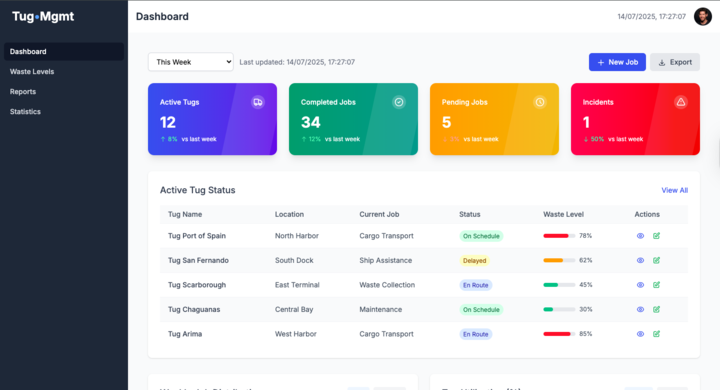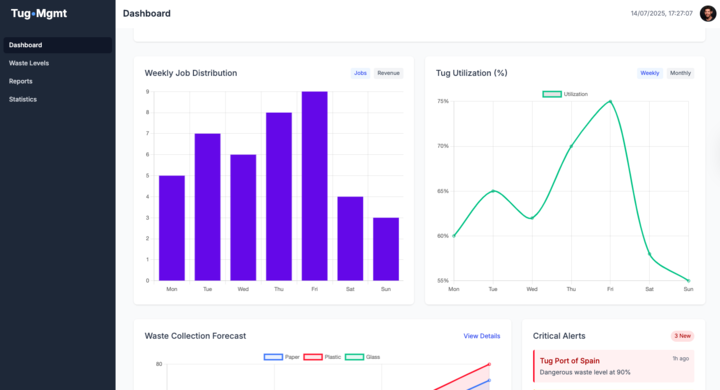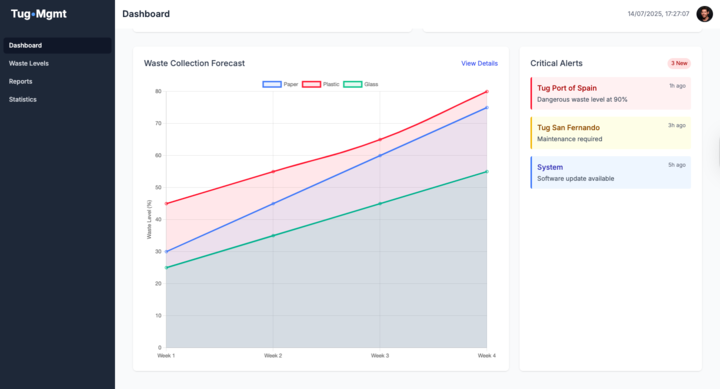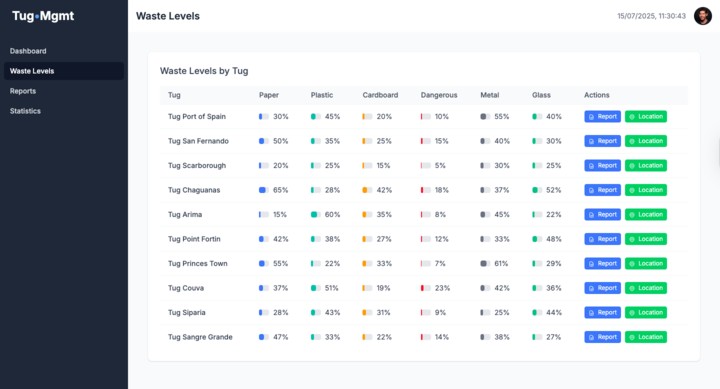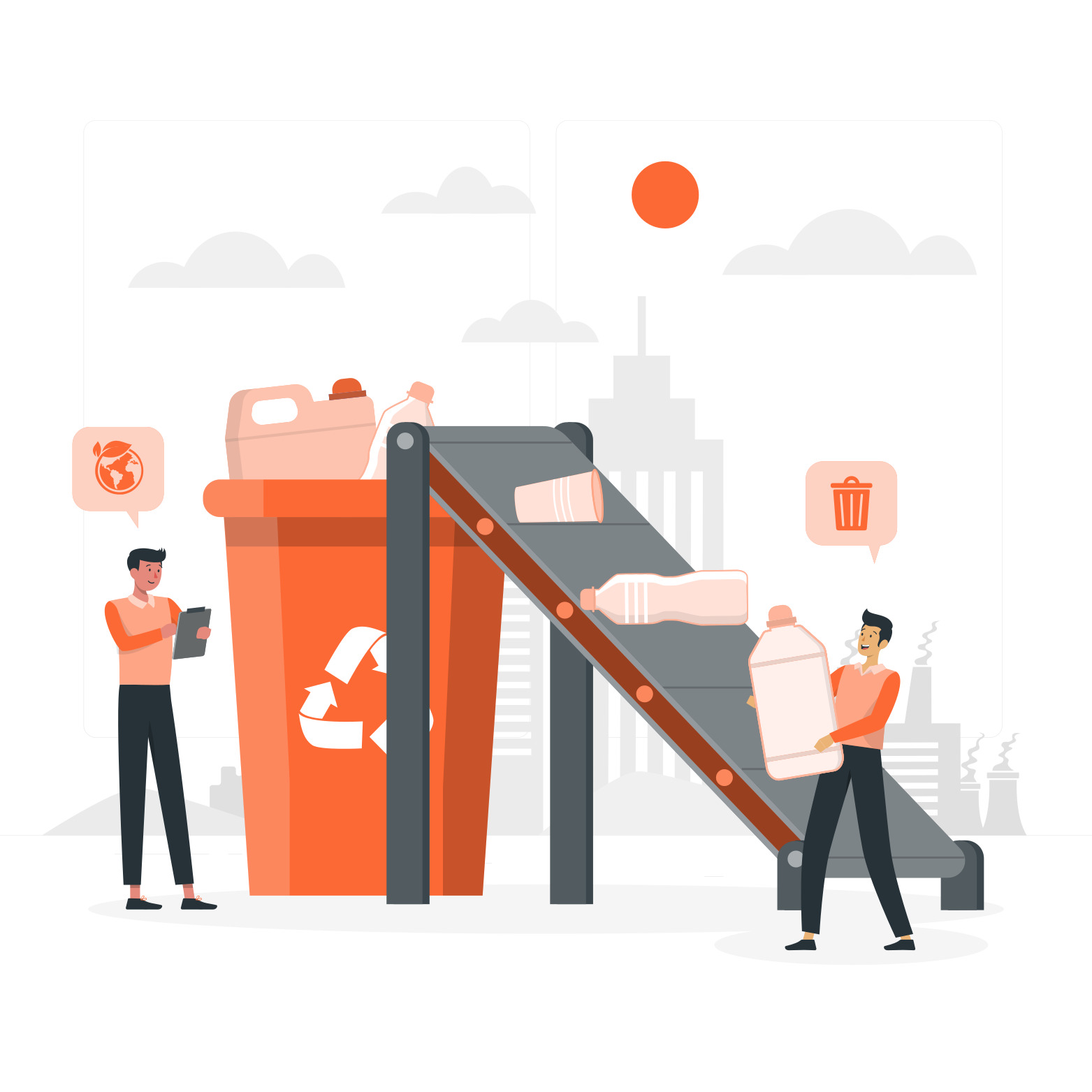
IoT Fill-Level Monitoring for TUG Boat Containers
Project Overview
Task National Energy needed a single platform to track maritime waste deliveries in real-time, convert that waste to energy, and balance the entire system. The solution had to cover vessel logistics, regulatory traceability, and live energy-meter data—while remaining fully automated and audit-ready. Solution End-to-end waste-route tracking Every vessel’s journey is logged: departure, route, arrival, tonnage, and hand-off points. Energy-conversion insight Smart Meters stream consumption / production data to predict loads and balance the grid. Operations cockpit Interactive dashboards show shipment history, volume trends, driver KPIs, and energy flow—making bottlenecks obvious in seconds. Robust data engine Python + Django backend, Selenium data scrapers, Celery & RabbitMQ pipelines. Docker and Terraform provision scalable, secure infrastructure with seamless CI/CD. Outcome: full lifecycle traceability, compliance with environmental rules, and optimised energy recovery—delivered as a single, enterprise-grade platform.
Technology Stack
Application Showcase
Challenge
- Build a single, automated platform to track maritime waste deliveries in real time, convert that waste to energy, and balance the overall system—covering vessel logistics, regulatory traceability, and live smart-meter data.
- Provide an operations cockpit with interactive dashboards for shipment history, volume trends, driver KPIs, energy flow, and fast bottleneck detection.
- Ingest heterogeneous ship telemetry + IoT sensors at sea (intermittent connectivity), normalize to time-series, and support proactive alerts for anomalies.
Our Solution
- End-to-end waste-route tracking: log each vessel’s departure, route, arrival, tonnage, and hand-off points for full lifecycle traceability.
- Energy-conversion insight: smart meters stream consumption/production to forecast loads and help balance the grid.
- Data & backend: Python/Django (with modular services), Selenium scrapers, Celery + RabbitMQ for scheduled/bulk jobs; containerized with Docker, infra as code via Terraform, CI/CD on GitHub Actions.
- Frontend: React.js + TypeScript (Tailwind), real-time WebSocket updates, mapping for ship movement, live KPI charts, secure sessions and role-based access.
- Sensor integration: smart meters, GPS beacons, environmental IoT via secure WebSockets/MQTT; normalization, time-series storage, and alerting for abnormal temperature/pressure/energy output; edge-to-cloud syncing for remote maritime zones.
- Mobile & Admin: React Native app with offline sync and push notifications; internal CRM for ship profiles, cargo manifests, energy processing events, compliance logs, and fleet-wide analytics.
- Deployment & reliability: AWS with multi-zone redundancy and autoscaling; web front end on Cloudflare Pages + CDN; monitoring and error tracking with Sentry; layered testing (unit, E2E, security).
Results
- Full lifecycle traceability of waste-to-energy routes, audit-ready compliance, and optimized energy recovery delivered as a single enterprise platform.
- Operational visibility in seconds: unified dashboards, live metrics, and anomaly alerts reduce manual effort and surface bottlenecks quickly.
- Scalable & maintainable delivery: containerized services, IaC, CI/CD, and staged rollouts enable rapid iteration with high reliability.

